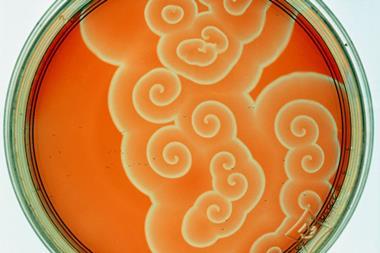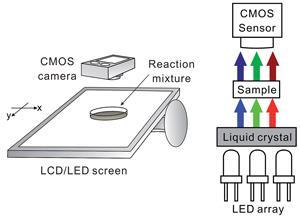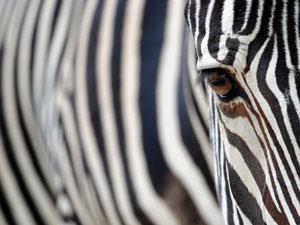A pulsating polymer gel has been used to make sheets that can ripple in a similar way to a muscle contracting. The work could aid the development of autonomous soft machines with life-like actuators for locomotion.
Self-oscillating Belousov–Zhabotinsky (BZ) gels were first reported in 1996. The material shrinks and swells in response to the phase of the BZ reaction – an oscillatory chemical reaction that is a classic example of non-equilibrium thermodynamics.
Shape-shifting behaviour analagous to that seen in living systems has been characterised in one- and three-dimensional BZ gels before, including simple bending and peristaltic pumping. Now, Eran Sharon’s lab at the Hebrew University in Israel has built on this by developing two-dimensional BZ gel sheets that autonomously transform into rippling three-dimensional shapes, mimicking the movement of biological membranes.
‘Three-dimensional shape evolution of extended sheets is a complicated process to predict and control,’ says Sharon. ‘We showed that it is possible to generate it, predict it and, to some level, control it with light. This system can be used to study the dynamics and control of such autonomous soft swimmers or actuators, which can open new directions in soft robotics.’
The team made thin (0.5mm) disc-shaped BZ gels 0.5–5cm in diameter using a previously established process comprising N-isopropylacrylamide (NIPA) and ruthenium monomers. A regular NIPA gel swells or shrinks in response to environmental parameters, including temperature and salinity. The addition of a small amount of a rutheniun-based monomer acts as a catalyst for the oscillating BZ reaction, which results in periodic shrinking and swelling.
When the inert gel discs were placed in a solution of the other BZ reactants (nitric acid, sodium bromate and malonic acid) a spontaneous chemical wave propagated through the gel, causing shrinkage of the material to induce three-dimensional shape change. This imitates the way an action potential travels across the heart to induce muscle contraction. The resulting pattern in the gel was visible as a colour change that was linked to the phase of the BZ reaction.
‘Another capability we developed was to imprint a desired BZ pattern instead of the spontaneously-generated one,’ says co-author Ido Levin. ‘The ruthenium monomer is sensitive to blue light, and by tracing a spiral using a strong blue laser we can generate a long-lasting spiral pattern centred in a location of our choosing.’
‘Perhaps the most exciting future possibilities involve the control of these behaviours using external signals – light in this instance – but temperature, magnetic fields or even humidity in other systems,’ says Irving Epstein, who studies chemical oscillators at Brandeis University, US. ‘It would be interesting to see how well the results scale to gels or other media of significantly larger or smaller size than centimetre-sized gels.’
References
I Levin et al, Phys. Rev. Lett., 2020, DOI: 10.1103/PhysRevLett.125.178001





















No comments yet